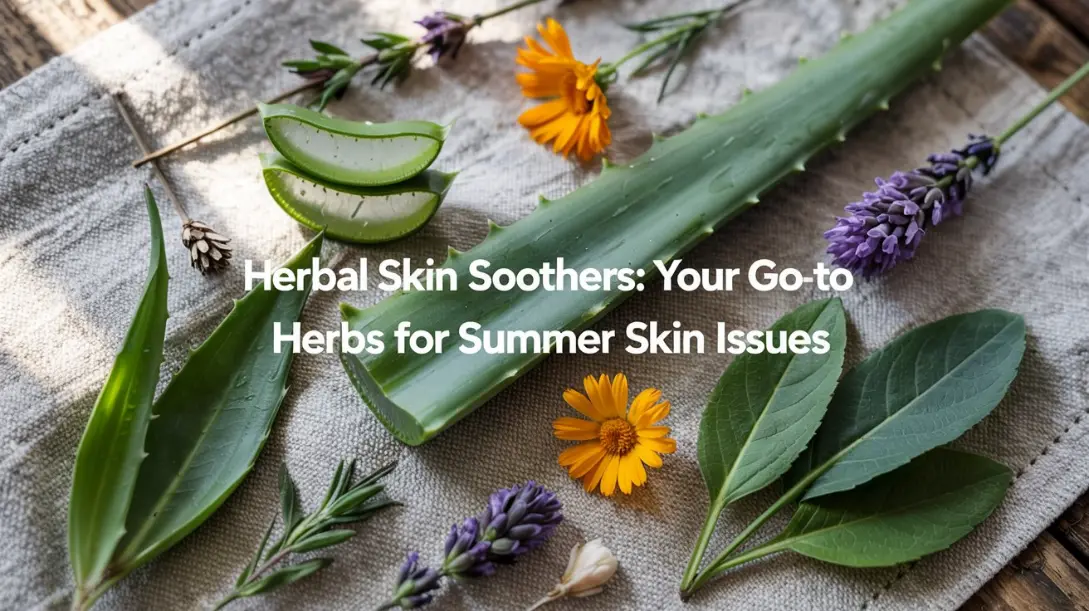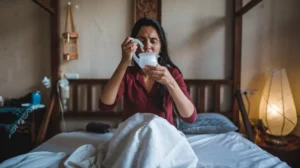Ah, summer! Long sunny days, adventures outdoors, barbecues, and beach trips. It’s a season many of us look forward to all year. But let’s be honest, sometimes our skin doesn’t love summer quite as much as we do. Maybe you stayed out in the sun a little too long and now resemble a lobster? Or perhaps those pesky mosquitoes decided you were the main course at the evening picnic? I understand how frustrating it can be when sunburn, itchy bites, or unexpected rashes put a damper on the fun. You’re not alone in experiencing these common summer skin issues.
The good news? Nature offers some incredible solutions! Instead of reaching straight for harsh chemicals, you can turn to gentle yet powerful Herbal Skin Soothers. These plant-based remedies have been used for centuries to calm irritation, promote healing, and bring welcome relief.
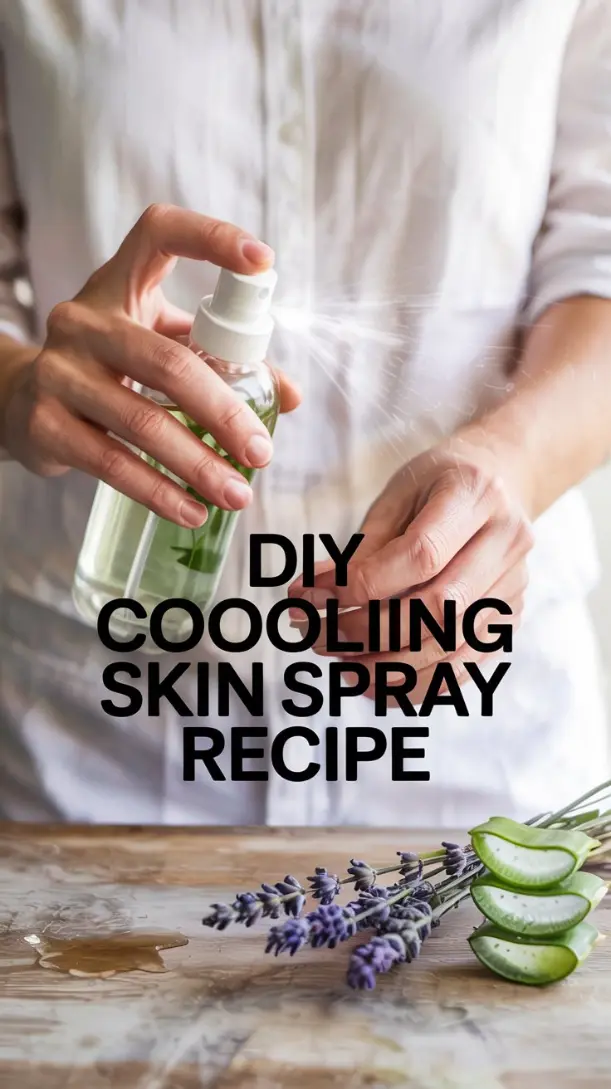
In this guide, we’ll explore the best herbal skin soothers for tackling those common summer skin issues. We’ll dive into which herbs work best for sunburn, bug bites, and rashes, and even show you how to make some simple remedies yourself. Let’s get your skin feeling happy and comfortable again so you can fully enjoy the season!
Why Does Summer Wreak Havoc on Our Skin?
Before we jump into the herbal solutions, let’s quickly understand why summer can be tough on our skin. Knowing the culprits helps us choose the best remedies.
Increased Sun Exposure: The Sunburn Risk
This one’s obvious, right? More time outdoors means more exposure to the sun’s ultraviolet (UV) rays. Even with sunscreen (which is always recommended!), overexposure can lead to painful sunburn – essentially radiation damage to the skin cells. This causes redness, inflammation, pain, and sometimes blistering.
Pesky Pests: Dealing with Bug Bites and Stings
Summer means bugs are out in full force! Mosquitoes, flies, bees, wasps… their bites and stings inject substances that trigger our body’s immune response, leading to itching, swelling, redness, and sometimes pain. Scratching can make it worse and even lead to infection.
Heat & Humidity: Prickly Heat and Minor Rashes
Sweating is our body’s natural cooling system, but when sweat ducts get blocked (often due to heat and humidity), it can cause prickly heat (miliaria). This looks like tiny red bumps or blisters and can be quite itchy. General heat and friction can also lead to other minor rashes and chafing.
Outdoor Activities: Poison Ivy, Oak, and Sumac Encounters
(Note: This is more common in certain regions) Brushing against plants like poison ivy, oak, or sumac can cause an allergic reaction due to an oil called urushiol. This results in an intensely itchy, red rash, often with blisters or streaks. Knowing how to identify these plants is key! Here’s a quick comparison:
| Feature | Poison Ivy | Poison Oak | Poison Sumac |
| Leaflets | ALWAYS 3 leaflets per stem | ALWAYS 3 leaflets per stem | 7-13 leaflets per stem (arranged pinnately) |
| Leaf Shape | Smooth or slightly toothed/lobed edges | Often resembles oak leaves (lobed edges) | Smooth, elongated leaflets |
| Growth Habit | Vine (often hairy) or low shrub | Usually a shrub, sometimes a climbing vine | Tall shrub or small tree (up to 30 ft) |
| Habitat | Woodlands, fields, roadsides (widespread) | Woodlands, grasslands (West Coast, Southeast US) | Exclusively in very wet, swampy areas (bogs) |
| Mnemonic | “Leaves of three, let it be!” | “Leaves of three, let it be!” | Does NOT follow “leaves of three” rule |
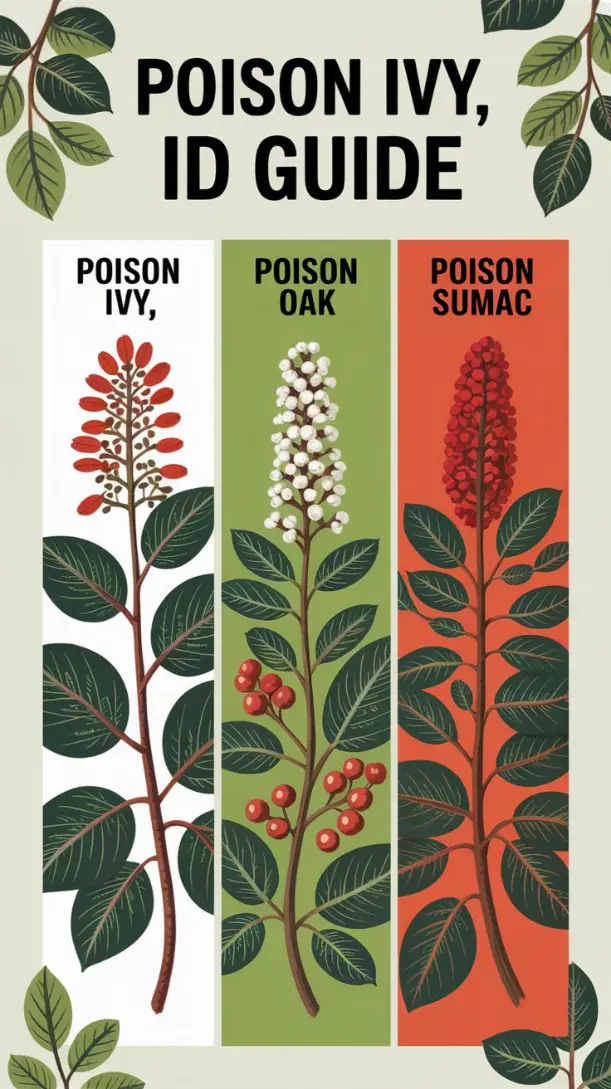
Cooling Down Naturally: Best Herbs for Sunburn
Okay, you overdid the sun. It happens! Instead of suffering, let’s reach for some cooling herbal skin soothers for that natural sunburn relief.
Aloe Vera: The Ultimate Natural Sunburn Remedy
There’s a reason Aloe Vera is practically synonymous with after-sun care. Its clear gel is incredibly cooling, hydrating, and packed with anti-inflammatory compounds that reduce redness and pain. Studies suggest it can help speed up wound healing, which is exactly what sunburned skin needs. Learn more here
- How to Use: Fresh gel directly from the leaf is fantastic! Just slice open a thick leaf and scoop out the gel. [Recommend image: Slicing an Aloe Vera leaf] If you don’t have a plant, look for store-bought gels with a high percentage of pure aloe vera (check the ingredients – avoid added colors, fragrances, or lots of alcohol), My own recommendation for Aloe vera. Apply gently to the affected area several times a day.
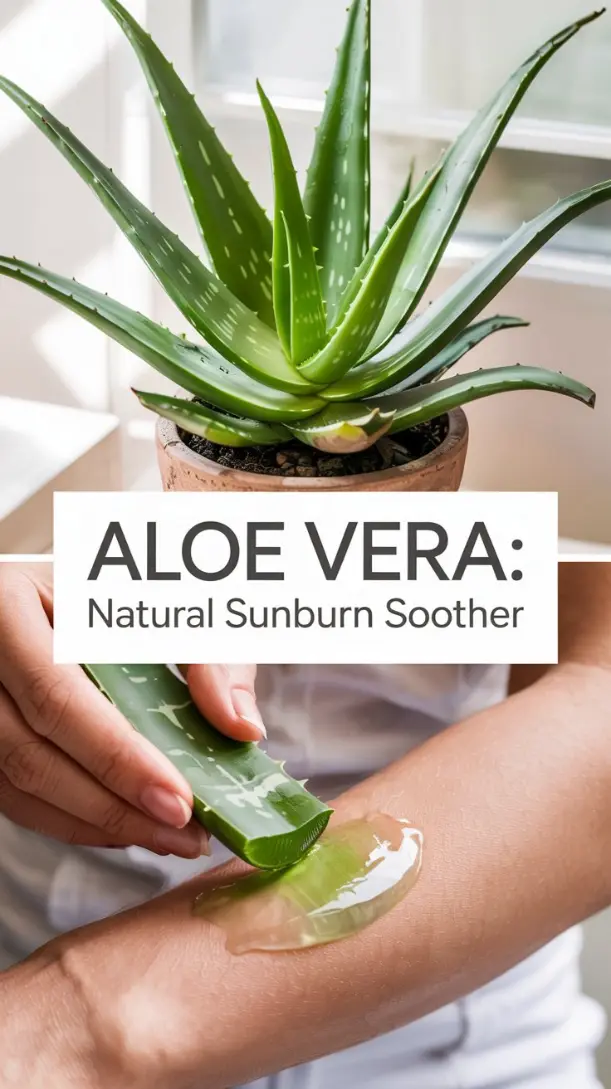
Calendula: Gentle Healing for Sun-Damaged Skin
Calendula flowers (like cheerful marigolds) are renowned for their skin-healing abilities. They are anti-inflammatory, promote cell repair, and are wonderfully soothing. Calendula for skin is particularly good for helping damaged skin recover gently.
- Best Forms: Calendula-infused oil is excellent – you can apply it directly (once the initial heat has subsided) or use it to make salves. A cool compress made with calendula tea can also be very soothing for immediate relief.
Lavender: Calming Relief for Minor Sunburns
Lavender isn’t just for relaxation! Its essential oil has anti-inflammatory and mild pain-relieving properties, making it helpful for taking the sting out of minor sunburns. Plus, its calming scent is a bonus when you’re feeling uncomfortable.
- How to Use: Never apply undiluted essential oil directly to sunburned skin. Instead, add a few drops to pure aloe vera gel or mix it well with a carrier oil like jojoba or coconut oil before applying. Alternatively, use lavender hydrosol (floral water) as a gentle cooling mist.
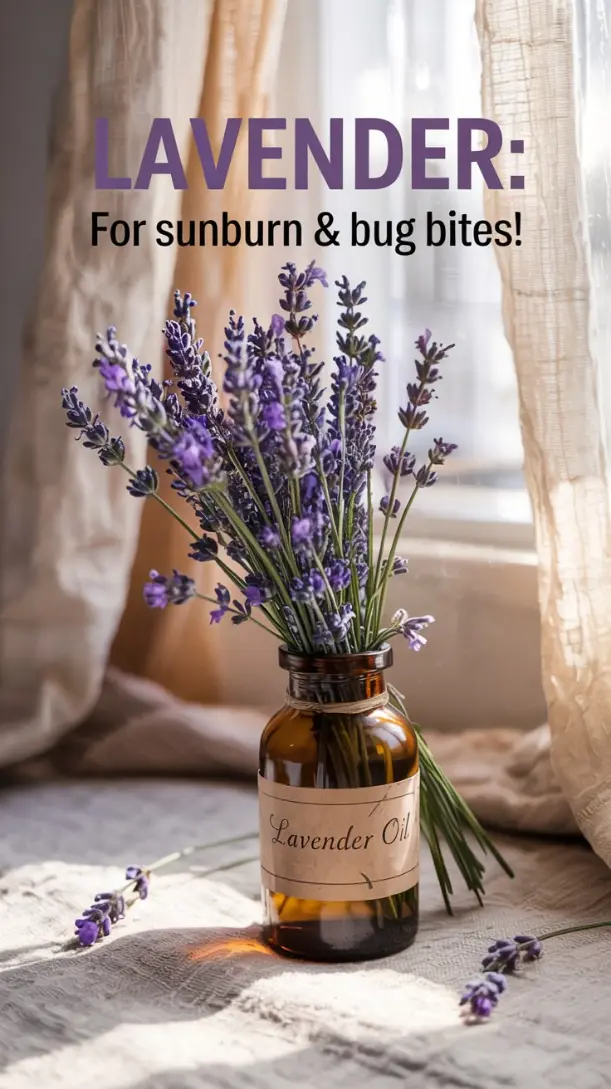
Plantain: A Surprising Soother for Sun-Stressed Skin
You might know plantain as a common lawn “weed,” but it’s a powerhouse herbal skin soother! It has remarkable anti-inflammatory and drawing properties, helping to pull heat out of the skin and reduce discomfort.
- How to Use: For sunburn, a cool compress made with strong plantain tea can be effective. You can also use plantain-infused oil once the initial burn has calmed down.
Stop the Scratch: Herbal Solutions for Bug Bites and Stings
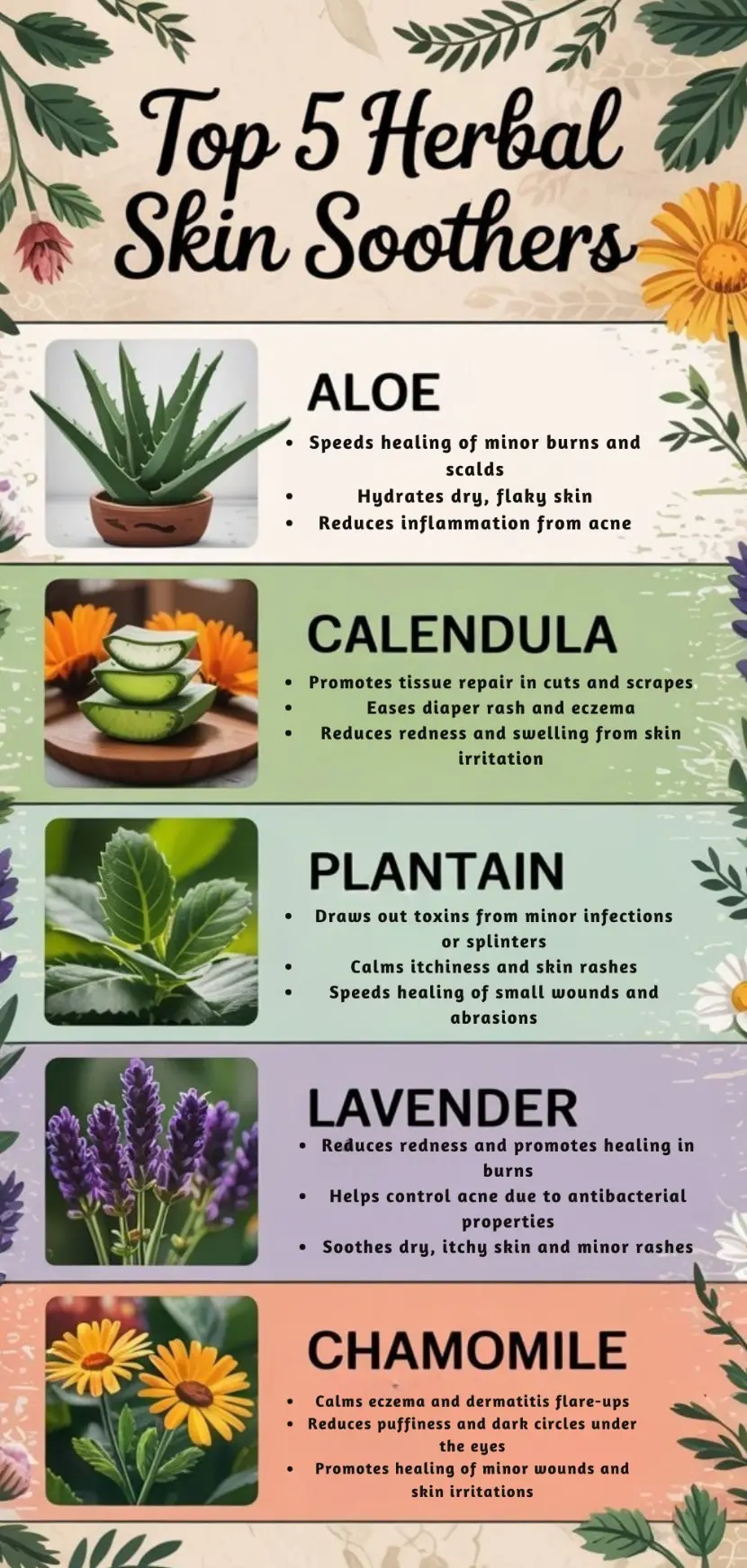
That relentless itch from a mosquito bite can drive anyone crazy! Thankfully, several herbs offer fantastic natural itch relief and help calm the irritation from bites and stings.
Plantain Poultice: Quick Relief for Bites and Stings
Yes, plantain again! It truly shines here. A simple plantain poultice can work wonders on bites and stings by helping to draw out irritants or venom and reducing swelling and itching. It’s one of the best herbs for bug bites.
- How it Works: Plantain contains compounds like aucubin which have anti-inflammatory effects. Its drawing action is key for stings.
- Simple Prep: Find some clean plantain leaves (make sure they haven’t been sprayed!), chew them slightly (or crush them with a little water) to release the juices, and apply the mashed leaves directly to the bite or sting. Cover with a bandage if needed.
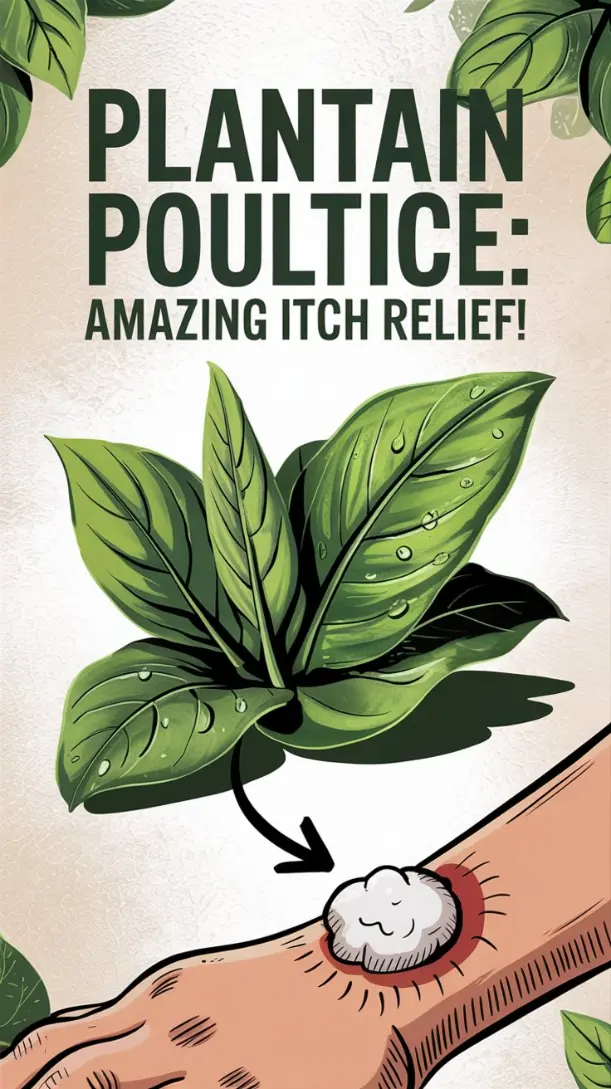
Lavender Essential Oil: Calming Itch and Irritation
A single drop of properly diluted lavender essential oil applied directly to a bite can often calm the itch surprisingly quickly due to its anti-inflammatory and soothing properties.
- Safe Application: Mix 1-2 drops of lavender essential oil with a teaspoon of carrier oil (like coconut or jojoba) or aloe vera gel before applying to the bite.
Peppermint Power: Cooling Relief for Itchy Bites
Peppermint provides a wonderful cooling sensation (thanks to menthol) that can temporarily distract from and relieve itching.
- How to Use Safely: Like lavender, peppermint essential oil needs dilution. Mix 1 drop with a teaspoon of carrier oil or aloe gel. Avoid using on broken skin or near the eyes. Peppermint hydrosol is a gentler option for misting itchy areas.
Witch Hazel: Astringent Action for Bite Relief
Witch hazel is a natural astringent, meaning it helps tighten tissues. This can reduce swelling and itching associated with bug bites.
- Application: Apply pure witch hazel extract (check for minimal alcohol content) directly to the bite using a cotton ball.
Calming Summer Rashes with Gentle Herbal Skin Soothers
Whether it’s prickly heat or general irritation from sweat and friction, these gentle herbs can bring comfort.
Chamomile Compress: Gentle Relief for Sensitive Skin
Chamomile is famously calming, both internally and externally. Its anti-inflammatory properties make it ideal for soothing red, irritated, or sensitive skin.
- How to Prepare: Brew a strong cup of chamomile tea, let it cool completely, soak a clean cloth in the tea, wring it out slightly, and apply as a cool compress to the affected area.
Oat Straw Baths: Soothing Itchy, Irritated Skin
Oats aren’t just for breakfast! Oat straw (or finely ground oatmeal) is incredibly soothing and moisturizing for itchy, inflamed skin, often recommended for conditions like eczema or heat rash.
- How to Make an Herbal Bath Bag: Fill a muslin bag or an old (clean!) sock with a handful of dried oat straw or rolled oats (colloidal oatmeal works best). Tie it securely and toss it into a lukewarm bath, squeezing the bag occasionally to release the milky goodness. Soak for 15-20 minutes.

Calendula Salve: Protecting and Healing Chafed Skin
For areas prone to chafing in the summer heat, a protective calendula salve can work wonders. It creates a gentle barrier while simultaneously soothing irritation and promoting healing thanks to calendula’s skin-loving properties. [Internal Link: DIY Calendula Salve Recipe]
Easy DIY Herbal Remedies for Summer Skin Care
Ready to roll up your sleeves? Making your own DIY herbal skin remedies is empowering and often more effective than store-bought options. Here are a few simple recipes:
Simple Aloe Vera & Lavender Cooling Spray Recipe
Perfect for spritzing on after sun exposure or anytime your skin feels hot and bothered.
- Ingredients: 1/2 cup pure Aloe Vera juice (or gel diluted with distilled water), 1/2 cup distilled water or Lavender hydrosol, 10-15 drops Lavender essential oil.
- Instructions: Combine all ingredients in a small spray bottle. Shake well before each use. Store in the refrigerator for extra cooling relief. Keep for about 1-2 weeks.
How to Make a Basic Calendula Infused Oil
This versatile oil is the base for many salves and can be used on its own.
- Ingredients: Dried Calendula flowers, carrier oil (like olive, sunflower, or jojoba).
- Instructions (Solar method): Fill a clean, dry jar about halfway with dried calendula flowers. Cover completely with your chosen carrier oil, ensuring the herbs are submerged by at least an inch. Seal the jar. Place in a sunny windowsill for 4-6 weeks, shaking gently every day or two. Strain the oil through cheesecloth, squeezing well. Store in a dark glass bottle.

Crafting a Plantain Poultice for Bites and Stings
As described earlier:
- Ingredients: Fresh, clean Plantain leaves.
- Instructions: Identify plantain (ensure it’s the right plant and hasn’t been sprayed). Wash the leaves. Chew a few leaves slightly or crush/mash them with a tiny bit of water until juicy. Apply the mashed pulp directly to the bite or sting. Replace as needed.
Soothing Chamomile & Oat Bath Bag Instructions
Combine the power of oats and chamomile for ultimate bath-time soothing.
- Ingredients: 1/2 cup rolled oats (or colloidal oatmeal), 1/4 cup dried Chamomile flowers.
- Instructions: Place oats and chamomile into a muslin bag, clean sock, or piece of cheesecloth tied securely. Add to a lukewarm bath and squeeze occasionally. Soak and relax!
Using Herbal Skin Soothers Safely: What You Need to Know
While herbs are natural, safety is still paramount. Here are key precautions:
Patch Testing New Herbs and Preparations
Before applying any new herb or DIY remedy liberally, always do a patch test. Apply a small amount to an inconspicuous area of skin (like your inner wrist or elbow) and wait 24 hours to check for any redness, itching, or irritation.
Understanding Proper Dilution for Essential Oils
Essential oils are highly concentrated and should rarely be applied neat (undiluted) to the skin, especially sensitive or damaged skin. Always dilute them properly in a carrier oil, lotion, or aloe vera gel according to safe usage guidelines (typically 1-2% dilution for topical use – about 6-12 drops per ounce of carrier).
When to Seek Professional Medical Advice for Skin Issues
Herbal remedies are wonderful for minor issues, but know their limits. Seek medical attention for:
- Severe sunburn (extensive blistering, fever, chills, confusion)
- Signs of skin infection (increasing redness, warmth, pus, streaks)
- Severe allergic reactions (difficulty breathing, widespread hives, swelling of face/throat) – Call emergency services immediately.
- Suspected poisonous plant rashes covering large areas or involving the face/genitals.
- Bites/stings if you have a known severe allergy.
Identifying Plants Correctly (If Foraging)
If you plan to gather your own herbs like plantain, positive identification is crucial. Use reliable field guides, apps, or learn from an experienced forager. Never ingest or use a plant topically unless you are 100% certain of its identity. When in doubt, leave it out!
Your Questions Answered: Herbal Remedies for Summer Skin (FAQs)
Let’s tackle some common questions about using herbal skin soothers.
What is the best natural remedy for severe sunburn?
For severe sunburn with extensive blistering or systemic symptoms like fever, it’s essential to seek medical advice. While aloe vera can be soothing after initial medical assessment, severe burns require professional care to prevent infection and complications. Herbal remedies are best suited for mild to moderate sunburns.
Can I use these herbs on children’s skin?
Many of these herbs (like Calendula, Chamomile, Oats, Plantain) are generally considered safe for children when used appropriately. However, children’s skin is more sensitive. Always use gentler preparations (like infused oils, hydrosols, or baths rather than essential oils), perform patch tests, and use lower concentrations. Peppermint essential oil should be used with extreme caution or avoided on young children. Always consult a healthcare provider knowledgeable in herbal medicine for specific advice regarding children.
How long does it take for herbal remedies to soothe skin?
Relief can vary. Cooling remedies like aloe or peppermint might offer immediate temporary relief from heat or itching. Anti-inflammatory herbs like plantain or calendula might take a bit longer (hours to days) to visibly reduce redness and swelling as they support the healing process. Consistent application is often key.
Where can I buy high-quality herbs for skin care?
Look for reputable sources! This could be local health food stores, online apothecaries specializing in organic or ethically wildcrafted herbs, or even local herb farms. Prioritize sources that provide information about where and how the herbs were grown or harvested. Check out this 907-page Evidence-Based Herbal Remedies eBook it’s also has guide and links to Source best dried quality herbs and herbs seeds to grow, check it out here.

Are there any herbs I should avoid using on my skin in the summer?
Yes! Some herbs can cause photosensitivity, meaning they make your skin much more susceptible to sunburn. Citrus essential oils (like lemon, lime, bergamot – unless steam-distilled), St. John’s Wort (used topically), and Angelica are common examples. Avoid applying these before significant sun exposure.
Conclusion: Embrace Natural Summer Skin Relief
Summer skin issues don’t have to ruin your fun! By turning to nature’s pharmacy, you can effectively soothe sunburn, calm itchy bites, and manage minor rashes using gentle yet powerful herbal skin soothers. Herbs like cooling Aloe Vera, healing Calendula, drawing Plantain, and calming Lavender offer fantastic natural support.
We encourage you to explore these remedies, perhaps even try making some of the simple DIY recipes shared here. There’s something incredibly empowering about creating your own effective skincare solutions straight from nature. Remember to always practice safely, patch test, and listen to your body.
What are your favorite herbal skin soothers for summer? Share your tips and experiences in the comments below – we’d love to hear from you!
Want to dive deeper into using herbs safely and effectively for your health? Check out our comprehensive guide, “Evidence-Based Herbal Remedies: Safe and Effective Ways to Support Your Health with Plants.” (2 Books in 1) for reliable, research-backed information. Check it out here.
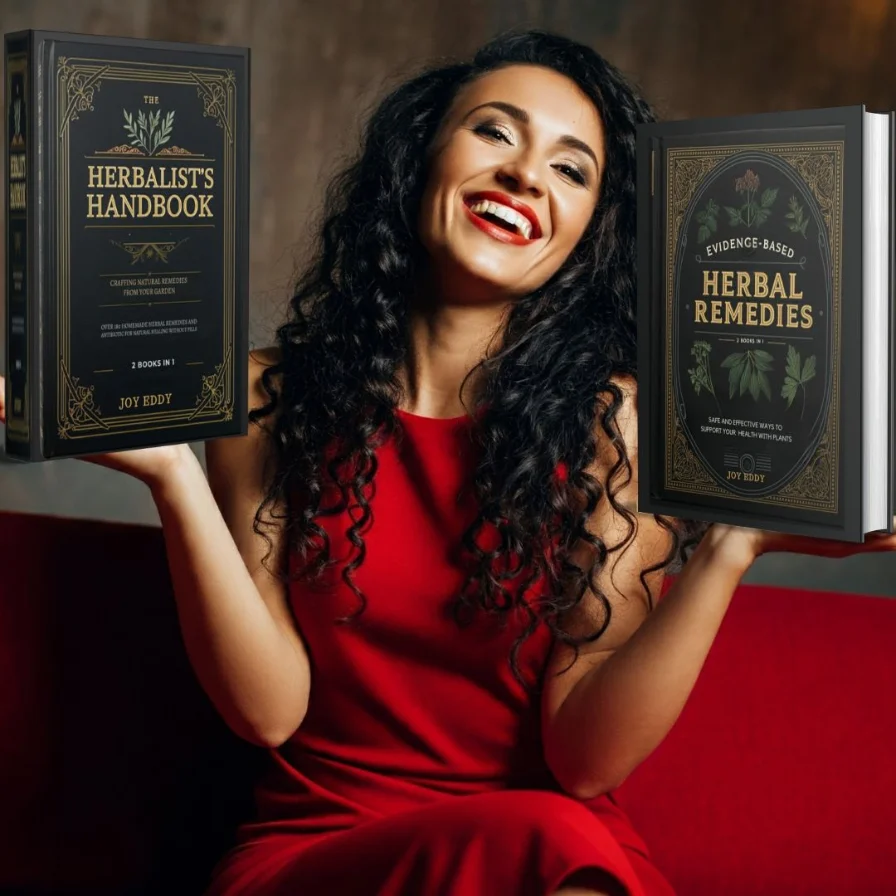
Disclaimer: This information is for educational purposes only and is not intended as medical advice. Always consult with a qualified healthcare professional before using herbal remedies, especially if you have underlying health conditions, are pregnant or breastfeeding, or are taking medications.

